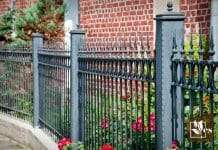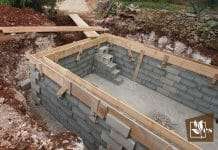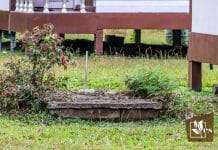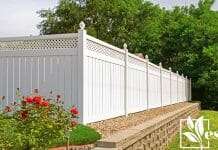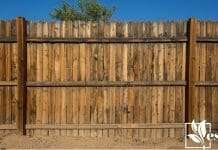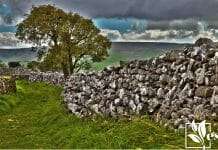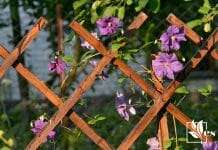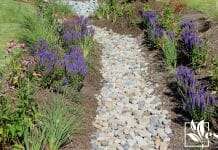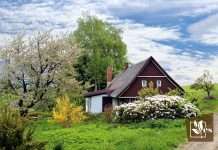Tree lined driveway are amazing aesthetically for the entrance of your home. The ideal method to add dramatic beauty to the scenery and benefit the environment simultaneously is to plant some lovely trees for the long drive! But what kinds of trees should be used to create a tree lined driveway?
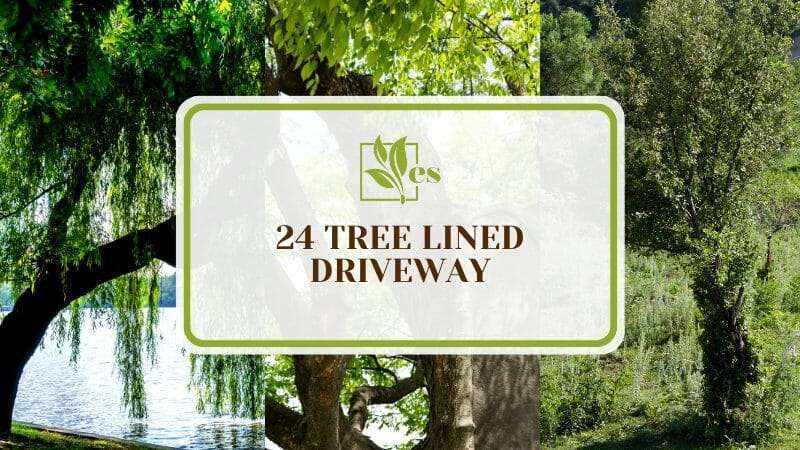
Although most low-maintenance trees are a good choice. Below we’ve compiled a comprehensive list of some of the best ones that are plain sensible.
JUMP TO TOPIC
- List of Best Trees For Driveway
- 1. Weeping Willow
- 2. Zelkova
- 3. American Beech
- 4. Crabapples
- 5. Chinese Elm
- 6. Rose of Sharon
- 7. Bradford Pear
- 8. Serviceberry
- 9. Honey Locust
- 10. Italian Cypress
- 11. Leyland Cypress
- 12. Dogwood
- 13. Prunus Americana
- 14. Emerald Green Arborvitae
- 15. Birch
- 16. Red Maple
- 17. Crepe Myrtle
- 18. Ginkgo Biloba
- 19. Juniperus Communis
- 20. Eastern Red Cedar
- 21. Dogwood Tree
- 22. Aspen Tree
- 23. Cleveland Pear Tree
- 24. Poplar Tree
List of Best Trees For Driveway
Now that you are much more familiar with the fundamental criteria for choosing a tree type for your driveway. Let’s get into some of our top choices.
1. Weeping Willow
A lovely and graceful tree easily identified is the weeping willow. It has long, sweeping branches with light-green, slender leaves. The tree blooms with little yellow flowers in the spring. Weeping willows can reach heights of almost 100 feet.
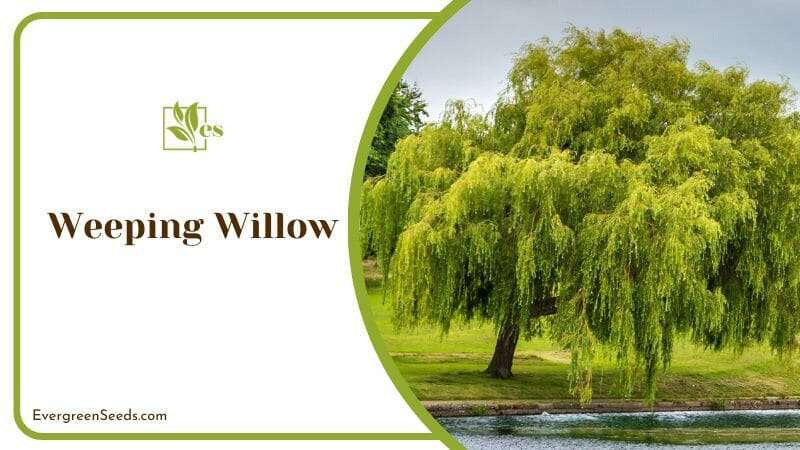
Hardiness Zones six-eight are where weeping willows can grow, and they need at least four hours of sunlight each day. Despite being very drought tolerant, they are frequently found close to water. These trees may grow in loamy, sandy, clay, or moist soil types and don’t mind acidic or alkaline soils.
2. Zelkova
The Japanese Zelkova is an upright tree with a vase-shaped canopy comparable to the American elm. They are shade trees that may grow up to 80 feet tall and are usually seen in parking lots, boulevards, and commercial landscaping.
They have medium-green, serrated leaves that change color during the fall. These trees, which can additionally be called Zelkova Serrata, also have wonderful bark.
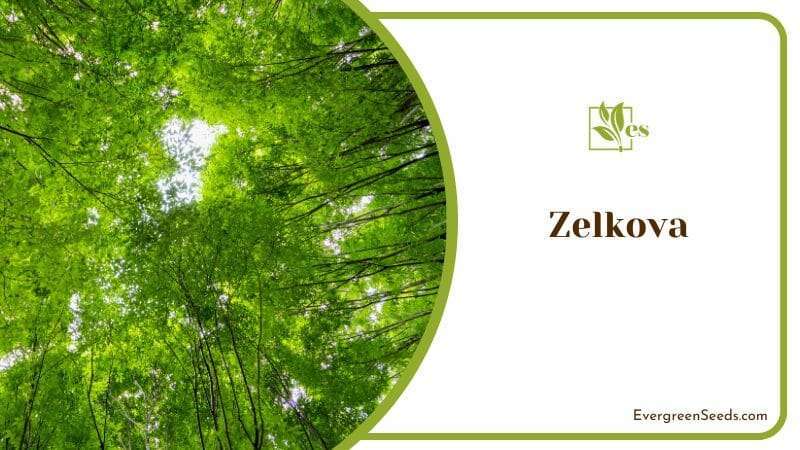
The tree bark peels back as it ages, revealing a rich orange hue.
Zelkova trees prefer soil about 7.5 pH, wet, and well-drained. Due to their sensitivity, these trees shouldn’t be planted or pruned in the late fall or winter. Hardiness Zones five to eight are ideal for zelkova growth.
3. American Beech
A beautiful border tree is an American beech, or Fagus Grandifolia. They are attractive and slow-growing shade trees with a wide canopy that, when fully grown, can reach heights of 50 to 80 feet.
The leaves of the tree are approximately six inches long and are shaped narrowly before reaching a point.
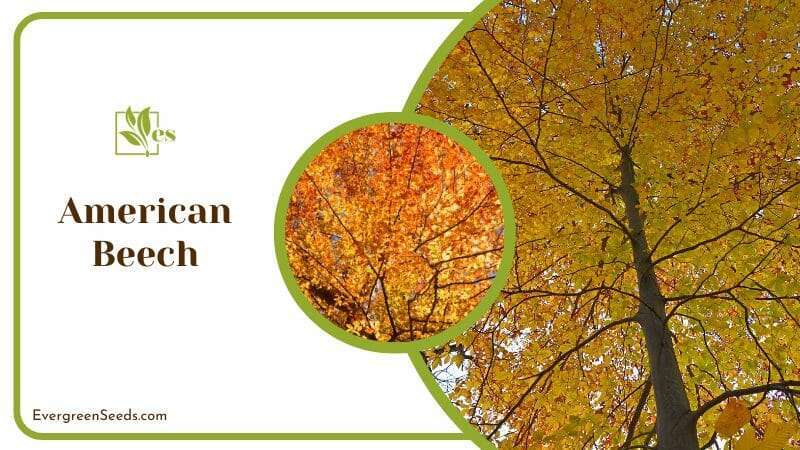
The American beech trees change to bright orange and yellow hues in the fall. These trees expand 12 to 24 inches per year.
They thrive in most soil types, including well-drained, clay, and acidic soils, and prefer full sun. They are extremely vulnerable to drought. This tree can be found in Hardiness Zones four to nine.
4. Crabapples
Crabapples are flowering ornamental trees with wonderful visual appeal and glossy and stunning leaves, their scientific name could also be Malus Spp.
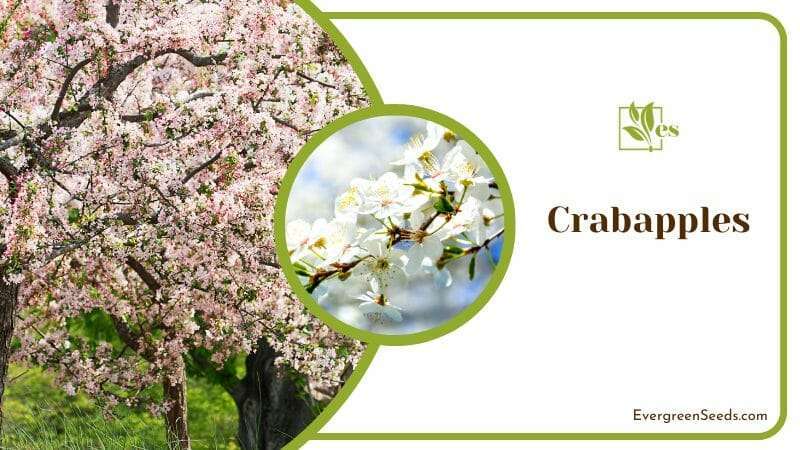
There are various crabapple trees, including the Prairifire and the Snowdrift. Additionally, the trees are disease resistant. Crabapples produce small fruits with a diameter of fewer than two inches. They draw a variety of species, especially deer.
The tree grows best in Zones three to eight. They enjoy acidic, moist, well-drained soils and require at least six hours of sunlight daily. You can also add some acid-loving plants close to these trees.
5. Chinese Elm
The graceful deciduous trees known as Chinese elms, or lacebark elms, have beautiful red and gray bark. When the tree is fully grown, they may reach heights of up to 50 feet.
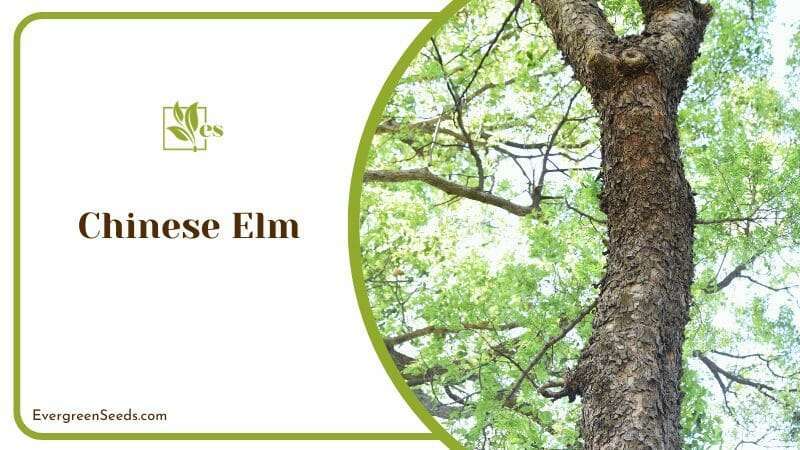
Their foliage has a leathery texture and a pointed, single-tooth structure, and from August to November, it turns a variety of vivid hues. Zones four to nine are suitable for the growth of Chinese elm. Although the trees don’t get very tall, their broad canopy casts a lot of shade.
6. Rose of Sharon
Beautiful deciduous Rose of Sharon trees typically have many trunks, which may also be called Hibiscus Syriacus. They have dark green foliage and trumpet-shaped flowers in white, pink, red, and purple hues.
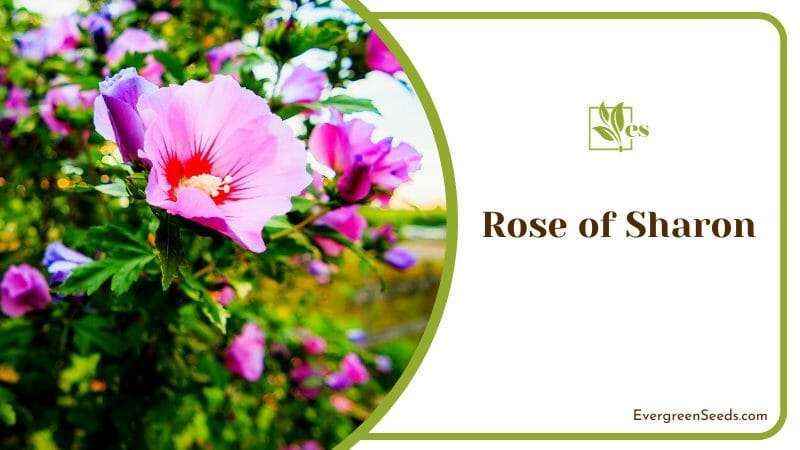
Although Rose of Sharon doesn’t have a particular preference for soil types, it will thrive best in wet, well-drained soil. In zones five to nine, full light is optimal for growing them. At full maturity, they only reach 12 feet and a width of 10 feet.
7. Bradford Pear
The bradford pear, or Callery pear trees, sometimes known as Pyrus calleryana, are breathtaking to view annually. They burst into bloom in the spring with an abundance of stunning white blooms, retaining their brilliant autumn color for a considerable time. They would be a fantastic addition to your driveway just based on looks. Deciduous Bradford pear trees can reach heights of 60 feet.
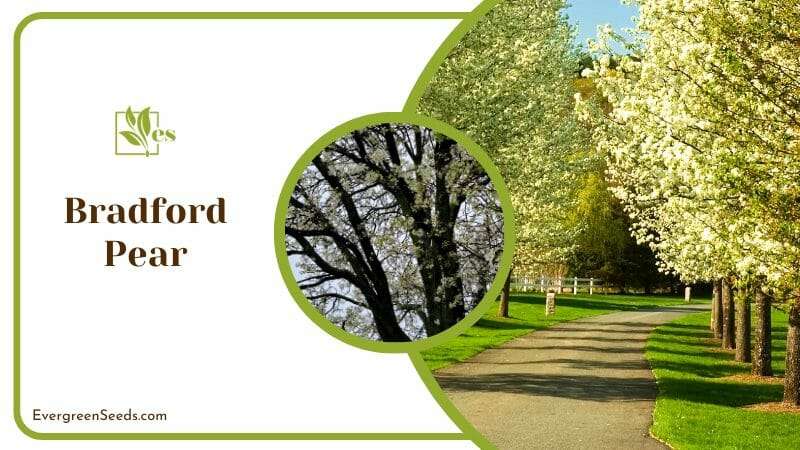
Birds frequently consume the tree’s small, infertile brown fruits and dark, glossy foliage. Usually, they will develop into a conical or domed shape. These trees prefer full light and do best in USDA Zones five through nine. They can withstand the majority of soil types as well as periods of drought or heavy rain.
The Bradford pear is considered an invasive species in several areas of the US. Be cautious to check with your local ordinances if you plan to line your driveway with various Bradford pear trees!
8. Serviceberry
The serviceberry, or the Amelanchier Candensis, is a tree that may reach a height of 25 feet and a spread of 25 feet when fully grown, is regarded as a small deciduous tree and a huge shrub.
This tree bears clusters of tiny, exquisite white blooms in March and April. It explodes in a magnificent show of crimson and gold in the fall.
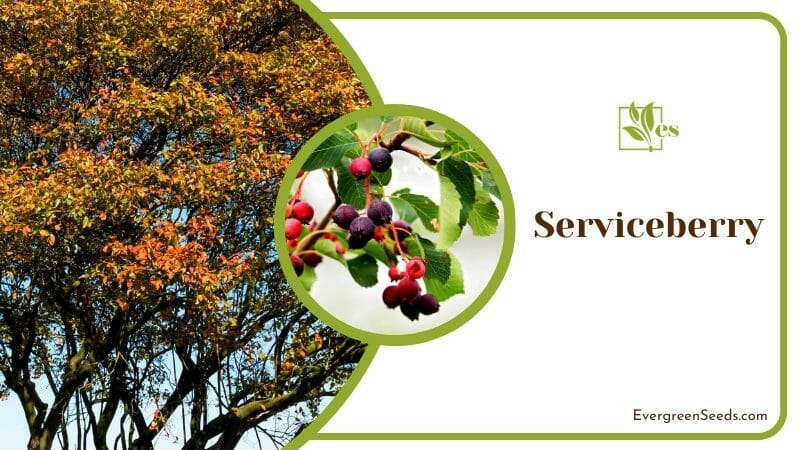
Another fruit that serviceberry trees produce is a reddish-black berry that ripens in late June. All types of birds love these berries.
A minimum of four hours of direct sunlight per day is preferred for serviceberry trees. On USDA Hardiness Zones four through eight, they thrive in wet, acidic, and well-drained soil.
9. Honey Locust
This enormous shade tree, also known as the thornless honey locust, has a gorgeous yellow-green canopy and would look lovely planted alongside a driveway.
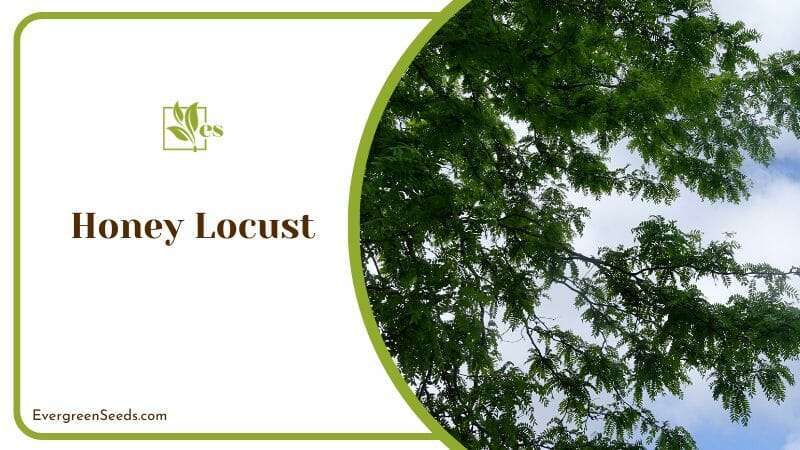
The leaves of this tree are eight inches long, pinnately complex, and can have up to 14 leaflets. The Gleditsia triacanthos var. inermis also produce lovely, fragrant yellow-green flowers in the spring.
This tree is especially simple, tolerant, quick-growing, and enjoys full light. It thrives in wet and dry soil and is resilient to various environmental pressures, including pollution. This tree will flourish in your yard if you reside in USDA Zones three to nine.
10. Italian Cypress
Fast-growing evergreen Italian cypress trees would add a touch of formality and sophistication to any driveway, which can also be known as Cupressus Sempervirens. when it is left on its own, they can grow up to 50 feet tall and three feet broad, giving them a long, graceful silhouette.
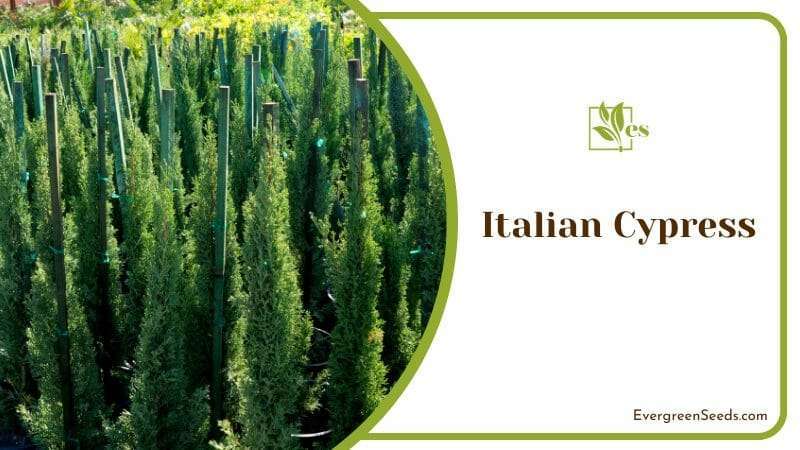
It thrives in warm, sunny areas typical of USDA Zones 8 through 10. The trees thrive in small, confined areas.
11. Leyland Cypress
Leyland cypress is another popular evergreen option for your driveway. This tree is thinly shaped and has thick, blue-green foliage. It is a quickly growing tree that can grow to 120 feet and 25 feet in width.
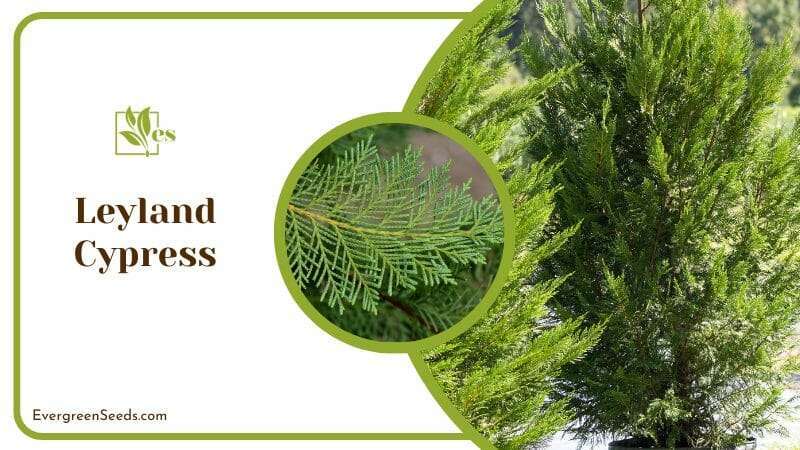
Leyland cypress can thrive in various soil types, including acidic, loamy, wet, granular, and well-drained clay, but it likes full sun. This tree thrives in USDA Zones 6 through 10.
It is key to remember that these evergreens remain green all year long. Naturally, the beauty, seclusion, and shade they provide will always be there on your driveway because they remain green all year.
12. Dogwood
One of the most beautiful blossoming trees, these trees can reach heights of 30 to 40 feet, which can also be called Cornus spp.
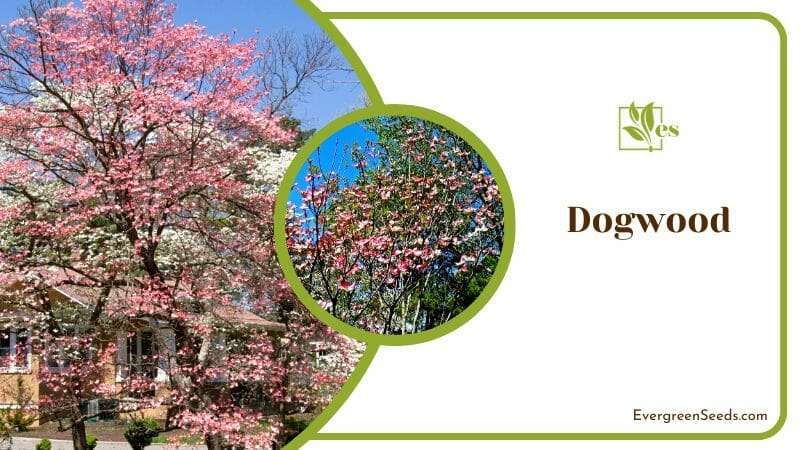
It has lush green foliage and eye-catching white and pink blossoms that persist for approximately four weeks in the spring. The trees turn a vivid scarlet color in autumn.
Just in America, there are 11 different types of dogwood, including the Pacific dogwood, blooming dogwood, and Brown dogwood. The majority of dogwood species thrive in Zones five through nine. Trees prefer acidic, clay, and well-drained soil and thrive in full sun.
13. Prunus Americana
The Pruns are Fruit trees, with their relatively tiny size and shape, make ideal border plants. There are various types of plum trees, but most want full light and soil that drains well.
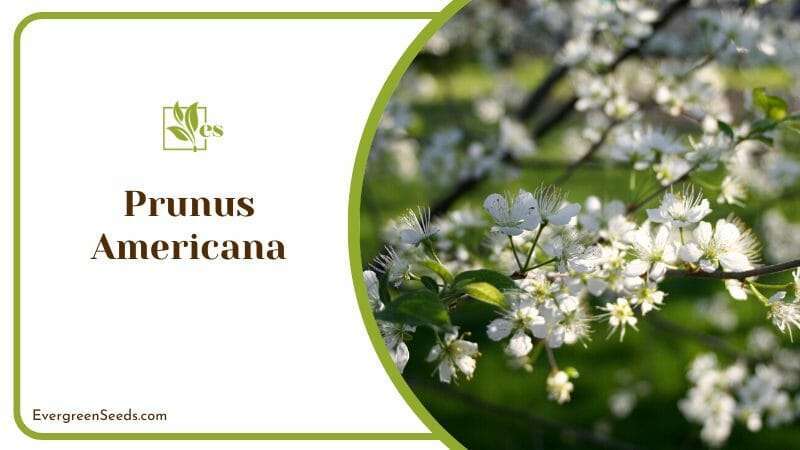
These trees require at least six hours of sun each day to bear fruit. The growing zones for plum trees are three to eight.
14. Emerald Green Arborvitae
These evergreen arborvitae are thin and pyramid-shaped and have a deep green color that is attractive year-round, in this case, the perfect one for your driveway would be the Thuja occidentalis ‘Smaragd’

When planted between two and three feet apart, their slow growth and dense foliage make them great windbreakers and border plants. Keep in mind that they prefer full light and thrive in hardiness zones two to seven. Acidic, sandy, rich, and well-drained soils are ideal for Thuja’s Emerald Green cultivar.
15. Birch
The Betula pendula along any driveway, are birch trees that would be a nice touch. There are numerous types, including Himalayan, River, and Silver birches.
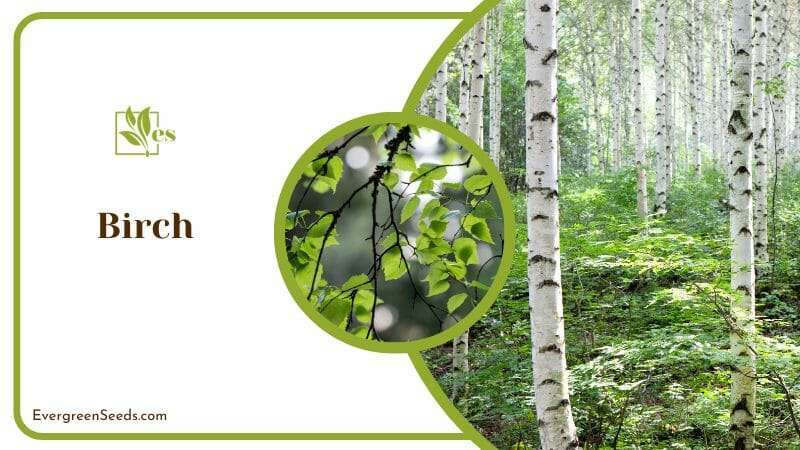
While some types are taller and more narrow, others are enormous shade trees with vast canopies. Typically, the bark of birch trees is silvery gray.
They thrive in direct sunlight and prefer loamy, sandy, acidic, alkaline, and moist, well-drained soil types. Zones three to seven are where you can locate this tree.
16. Red Maple
These maples, key being the acer rubrum, make great border trees because they offer a vibrant display of color in the spring, summer, and fall. Although they flower in the spring, they shine in the fall with vibrant red and golden foliage.
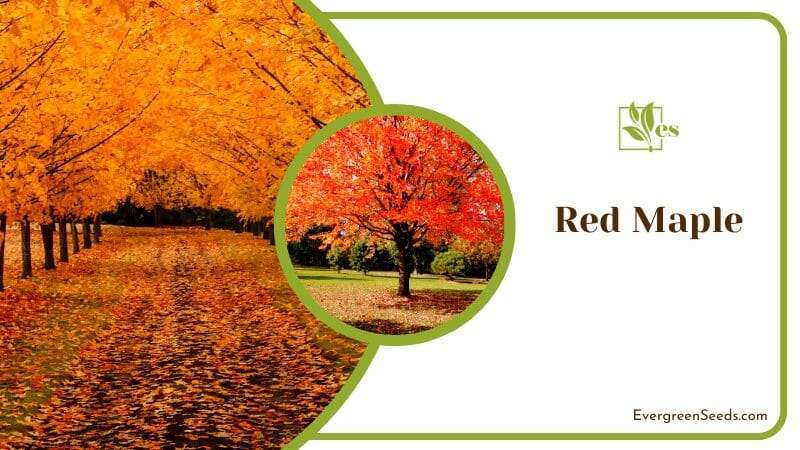
They have an appealing oval form and can reach heights of up to 60 feet. They also serve as important habitats and food sources for wildlife. These trees thrive in USDA Zones three through nine. They prefer acidic, well-drained soil.
17. Crepe Myrtle
This tree is also known as Lagerstroemia indica. The 9 to 25-foot tall decorative crape myrtle tree has lovely pink blossoms and is a deciduous flowering tree. They produce flowers that give them a pleasing appearance all around. These would give your landscape’s scenery more depth. It can be fascinating to observe how the color of their leaves changes over time.
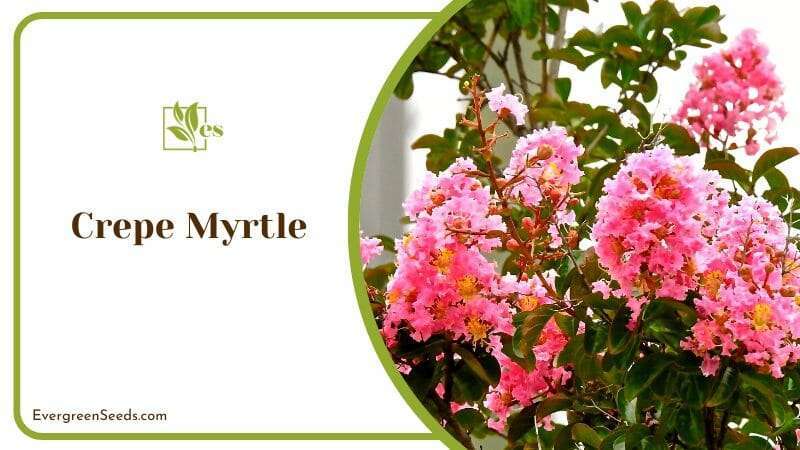
Various pollinators and birds are drawn to the blossoms’ wrinkled look, reminiscent of crepe paper. These trees have magnificent gray bark that looks lovely in contrast to the fall foliage’s shades of yellow, red, and orange.
In USDA Zones six to nine, crepe myrtles can grow in various circumstances. They are plants that prefer full sunlight, heat, and moist, drained soils.
18. Ginkgo Biloba
Large dioecious trees native to China and Japan are ginkgo Biloba or maidenhair trees. The mature trees have a height of 50 to 80 feet, with a canopy that can reach 40 feet.
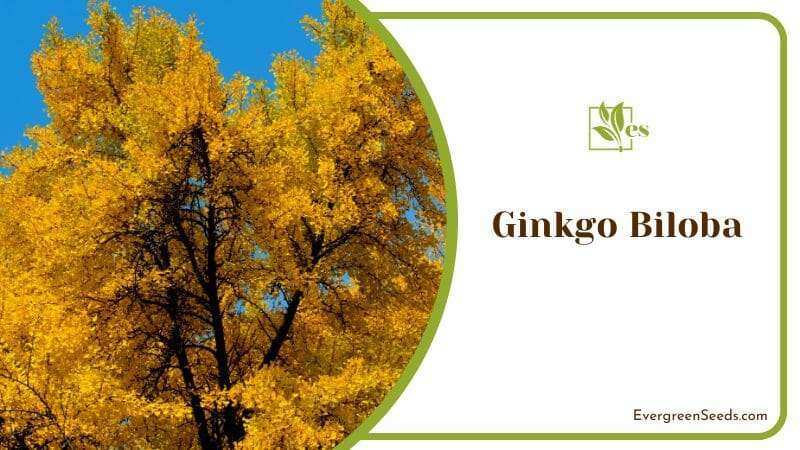
They have unusual leaves that resemble fans. These leaves have a gorgeous golden-yellow color in the fall and would look stunning when arranged down a driveway.
These trees thrive in USDA Zones four to nine. in the United States. They don’t have a favorite soil type, although sandy, well-drained soil works best for them. The tree will function at its optimum in either partial shade or full sun.
19. Juniperus Communis
Numerous junipers include the Spartan, Skyrocket, Moonglow, and Taylor forms. Common junipers can reach heights of up to 20 feet. Most of the time, juniper trees are graceful evergreens with lush green foliage and alluring bright-blue berries.
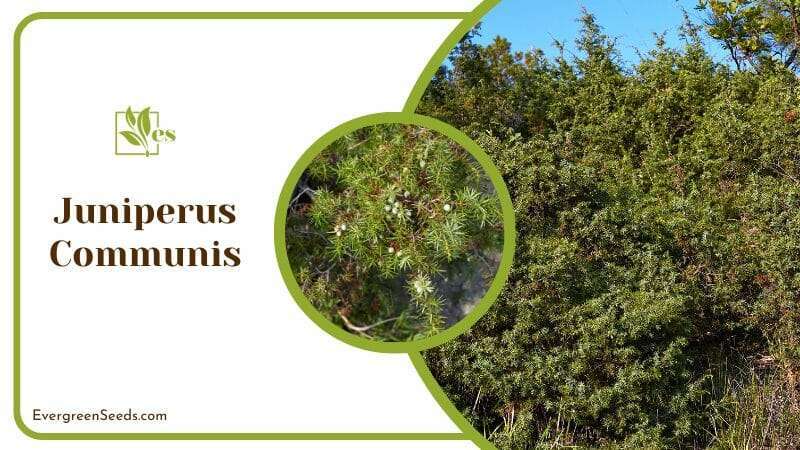
In USDA Zones three to nine, juniper trees can be found. They may therefore grow in a range of soil types. They favor some shade over direct sunlight, if your driveway doesn’t see much light, these are the perfect trees!
20. Eastern Red Cedar
The Eastern red cedar, also called Juniperus Virginiana, is a magnificent evergreen that reaches heights of 30 to 65 feet and grows in a pyramidal style.
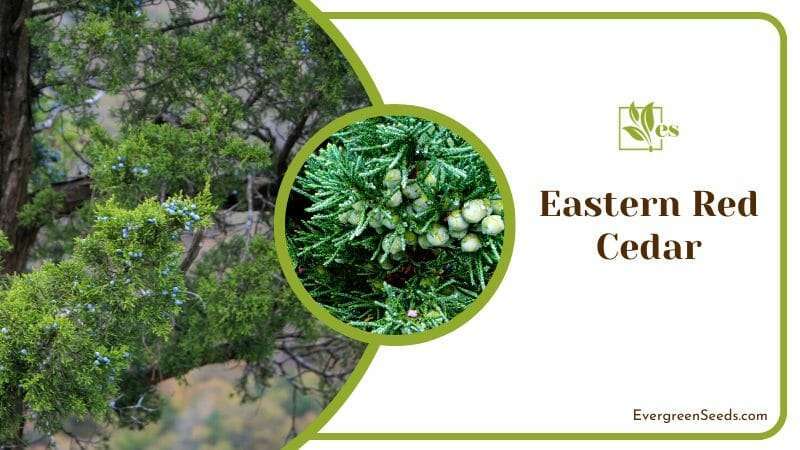
This beautiful tree produces cone-shaped blue-green fruits that resemble berries and medium-green foliage. They are substantial trees that work well as windbreaks.
Eastern red cedar trees thrive in full sunlight and can withstand various environmental stresses. They thrive in hardiness zones two to nine and can grow in various soil types, from acidic to alkaline.
21. Dogwood Tree
Dogwoods are a lovely choice to enjoy all year round! They bloom in the spring and summer and don’t look bad in the winter. They are simple to grow which means they require little upkeep all year round.
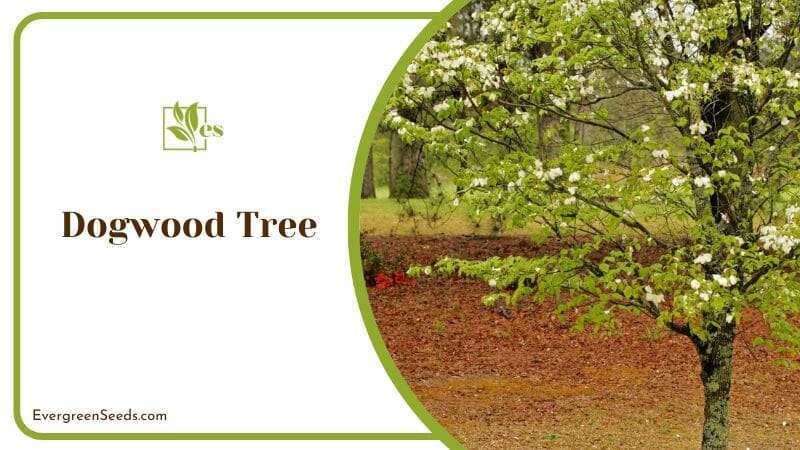
Most of the work is done by the weather! If the leaves and branches obstruct your front yard or cover your driveway, you must cut them back.
There are a few different varieties of dogwood trees available as well. Your options are the Flowering Dogwood, which has pink or white blossoms, the Kousa Dogwood, which has white flowers, or one of the many hybrids. They are all quite beautiful in the early spring and grow to be very big trees when they are about 40 feet tall at maturity.
22. Aspen Tree
One of the trees with the fastest rate of growth is the aspen. They are ideal for residences with limited space because they are also relatively thin.
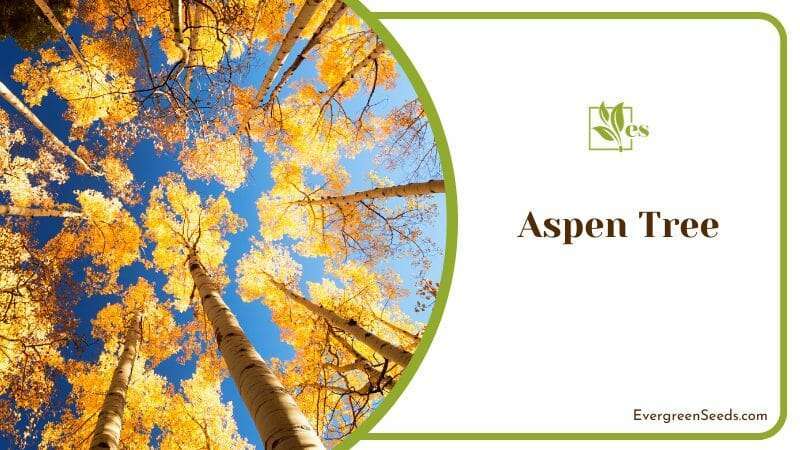
In ideal circumstances, the Quaking Aspen Tree (Populus tremuloides) can grow up to five feet yearly, maturing at 40′–50′ tall.
23. Cleveland Pear Tree
If you want a tree with a more upright shape, mature pear trees are lovely when they bloom. They don’t yield fruit because they are male trees but have a wonderful scent. White flowers blossom in season, and the tree canopy has a wonderful oval form.
It’s a terrific idea to line a driveway with a giant shade tree like this one! They grow in a way that makes maintenance simple for you because no pruning or trimming is required.
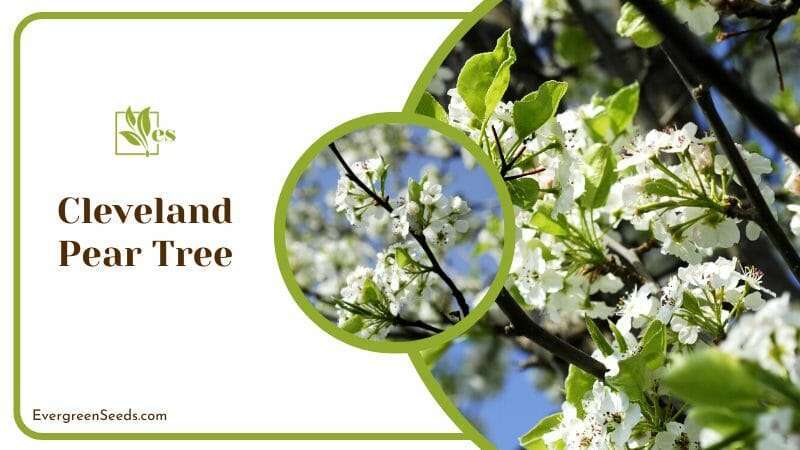
One of the greatest decorative pear trees to grow next to a driveway is the Cleveland Pear Tree (Pyrus calleryana ‘Cleveland Select’).
If you reside in a colder region, they often grow two feet yearly and are resistant to wind, snow, and ice damage.
24. Poplar Tree
Poplar trees are great for bordering your driveway because they are quite slender. They reach a height of 40 to 50 feet when fully grown.
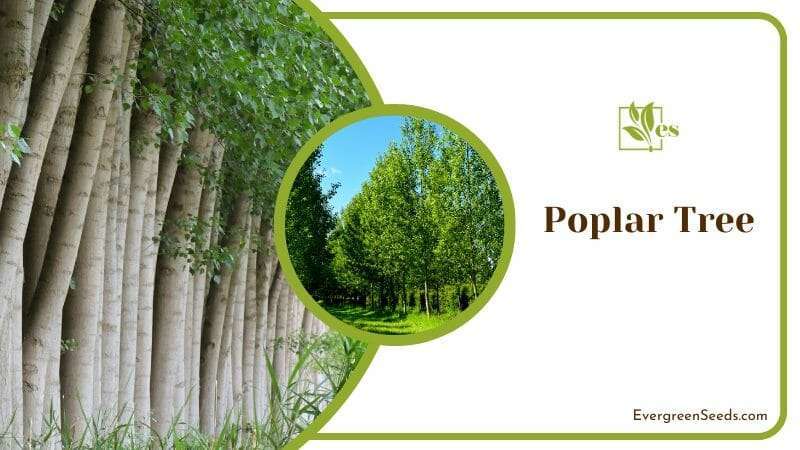
One of the trees with the fastest growth rates is the poplar, which prefers full light. These big deciduous trees are a pleasant sight in any yard or driveway. In the mountains or on the upper plains, you may frequently observe them.



